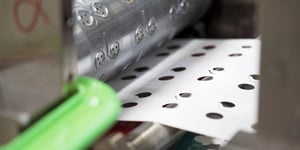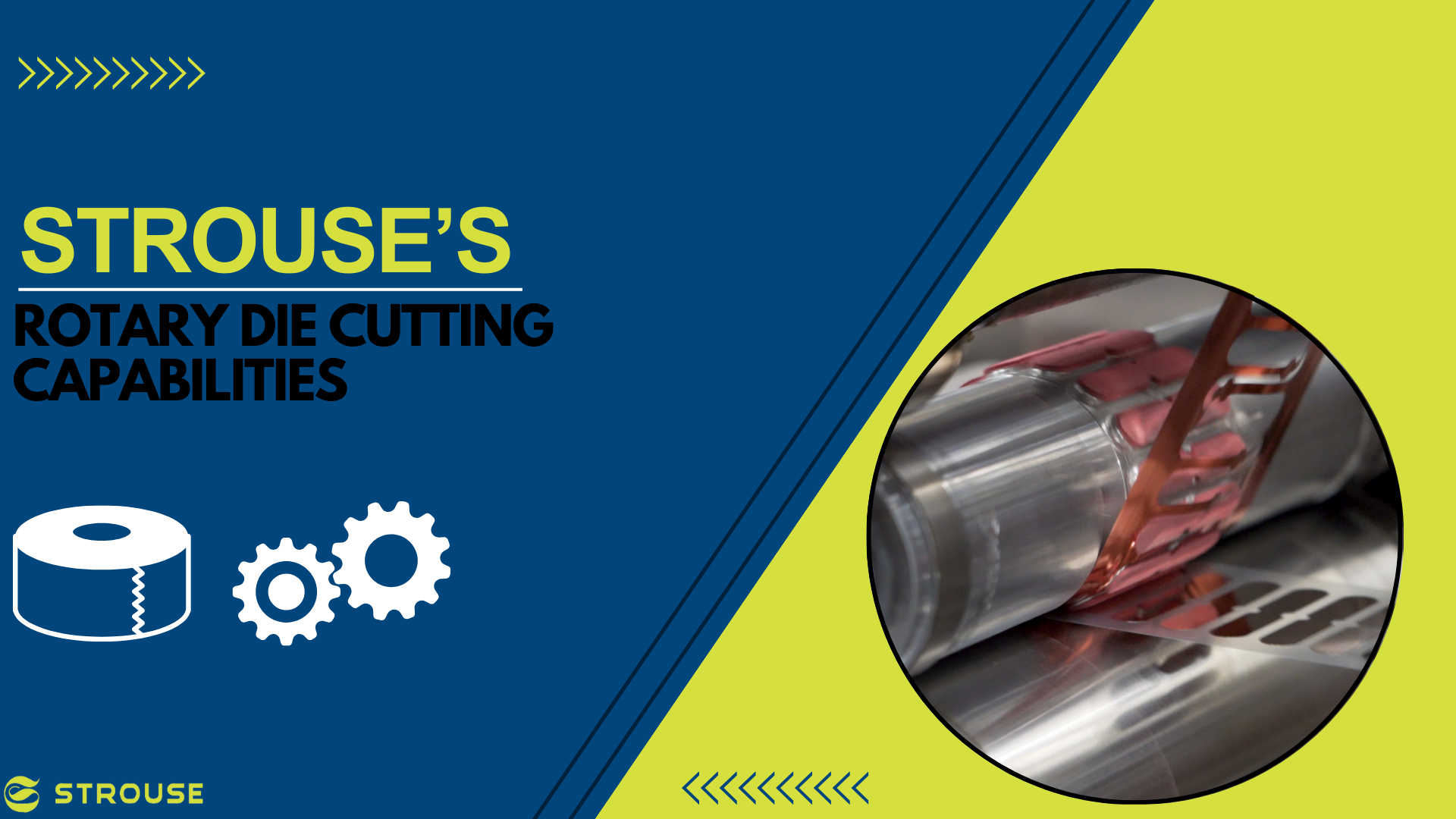ROTARY VS FLATBED VS LASER DIE CUTTING
Rotary die cutting is different from flatbed or laser die cutting.
FLAT BED DIE CUTTING
While the rotary process uses a cylinder die tool to cut shapes out of a material, flat bed die cutting uses a hydraulic flat bed press to cut the desired shape.
Flat bed die cutting is suitable for low-volume projects, yet inefficient for high-volume ones, whereas rotary die cutting machines are often a lot more efficient at making high volume products.
LASER CUTTING
Laser cutting differs entirely from flatbed and rotary die cutting: rather than steel, it uses a laser to create the desired shape.
The light from the laser sears into the materials and produces a variety of shapes. While laser die cutting is efficient for some materials, others react poorly to the light and may be destroyed.
Different projects benefit from using particular cutting methods, so your converter will likely suggest a type that suits your unique design.
When Do You Use Rotary Die Cutting?
From simple die cut shapes to complex, multi-layer products, die cutting helps increase speed and consistency in many industries.
Here are a few specific uses and instances of rotary die cutting.
CREATIVE PURSUITS
-
- Logos
- Labels
- Surface protectors
MEDICAL DEVICES & WOUND CARE
-
- Medical adhesive tape
- Wound dressings
- Stick to skin adhesives
- Device components
AUTOMOTIVE
-
- Protective films
- Masking tapes
- Seals and gaskets
- Cell-to-cell EV battery bonding
ELECTRONICS
-
- Thermal management
- EMI gaskets
- Screen protection
- Insulation
What Materials Can You Rotary Die Cut?
Rotary die cutting can cut a wide variety of materials, so wide in fact, it’d be challenging to name all the flexible materials we can die cut.
Many converters provide die cutting services for flexible materials, including pressure-sensitive adhesive tapes, foils, fabrics, and numerous others. While converters CAN cut most flexible materials, achieving tight die cut tolerances on elastic, abrasive, thick, or unsupported materials is more challenging (and expensive).
What Are the Benefits of Rotary Die Cutting Methods?
Now that you know what rotary die cuts are, why pursue them?
COST EFFECTIVE
Die cut parts can be extremely cost-effective at high volumes and often have a decent turnaround time if projects are planned far enough in advance.
BETTER PART CONSISTENCY
Die cutting is far more accurate and repeatable than manual processes. Plus, rotary machines can combine different steps, such as die cutting, adhesive laminating, perforating, and more, into one seamless, scalable process.
The Downsides to Rotary Die Cutting
The custom die cutting process isn’t for every project, so it’s only fair that we discuss the reasons why it may not suit certain applications.
CUSTOM TOOLING
Die cutting often requires the upfront purchase of custom tooling, which involves paying the initial cost and waiting for the tool to be fabricated.
POTENTIAL TOLERANCE LIMITATIONS
Depending on your chosen material and design, it’s possible that your tolerances might be too tight for rotary die cutting. Machine shop tolerances don’t always translate to rotary processes, which is why you’ll want to consult with a converter before you lock in your final design.
MINIMUM ORDER QUANTITIES FOR MATERIALS
Large material roll purchases require MOQs, which can increase your initial cost. However, if you plan on ordering higher quantities or scaling up your process, larger orders will have a lower price per part.
What Are My Die Cutting Options?
If you’re looking for identical components, rotary die cutting has multiple options.
i. PURCHASING A MACHINE
Purchasing a machine will give you more control over your production process. However, if you’re planning to purchase a machine, make sure your business has the capacity to pay the upfront costs (which can range from a few hundred thousand to a few million dollars) and train operators and engineers to navigate the complexities of the die cutting process.
ii. DIE CUTTING SERVICES
Not every company is equipped to become die cutting experts, which is why you may want to use a trustworthy partner. Before you reach out, evaluate where you are in the process:
Are you still planning a concept? Or have you already found material, built a design, and are seeking out prototypes? Product development isn’t always linear, but you’ll want to have some sort of drawing with measurements and an idea about the material before approaching an adhesive converter.
If you’re ready to build your product, then look no further for rotary die cutting services—contact Strouse to start your die cutting project today. Our team will walk you through the steps to building the most efficient process for your intended purpose.
Got any questions? Reach out or learn more about rotary die cutting in our Learning Center.
Originally published: January 6, 2020








.jpeg?width=290&name=0%20(1).jpeg)